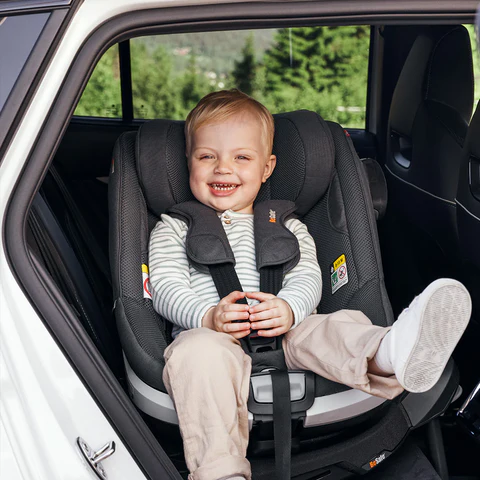
Extended Rear Facing Car Seat: Why It Matters for Your Child’s Safety
If you’re a parent, car seat safety is one of those non-negotiables that can make all the difference. You’ve probably heard the buzz about extended rear facing car seats, but is it just a parenting trend or a proven safety measure? The truth is, rear-facing travel isn’t just recommended—it’s backed by science, crash tests, and global safety guidelines.
In this guide, we’ll break down why keeping your child rear-facing for as long as possible can drastically reduce injury risk, what to look for when buying one, and how to use it correctly.
Why Extended Rear Facing Is Safer
In a frontal collision—the most common and severe type of crash—a rear-facing seat cradles your child’s head, neck, and spine, distributing the impact more evenly across the seat shell. This significantly lowers the risk of life-threatening injuries.
Key Safety Facts:
-
Studies show children are up to 5 times safer in rear-facing seats compared to forward-facing ones.
-
Rear-facing helps prevent spinal cord injuries, which can happen even at low speeds.
-
Many countries, including Sweden, recommend rear-facing until age 4 or older.
When Should You Switch to Forward Facing?
Most parents turn the seat too early. The general rule:
-
Keep your child rear-facing until they outgrow the height or weight limit of the seat, not based on age.
-
Many modern extended rear-facing seats accommodate children up to 25 kg (55 lbs) or around 4–6 years old.
Features to Look for in an Extended Rear Facing Car Seat
| Feature | Why It Matters | Recommended Spec |
| High Weight Limit | Allows longer rear-facing use | 18–25 kg minimum |
| Adjustable Recline | Keeps child comfortable | 3–5 recline positions |
| Side Impact Protection | Extra safety in side collisions | Deep, padded wings |
| Extended Leg Room | More comfort for older toddlers | Adjustable leg space |
| Easy Installation | Reduces misuse risk | ISOFIX or seatbelt guides |
| Removable Covers | Easier cleaning | Machine washable |
How to Install and Use an Extended Rear Facing Car Seat
-
Read the manual—installation errors are one of the top causes of reduced protection.
-
Check if your vehicle supports ISOFIX or if you’ll need a seatbelt installation.
-
Keep straps snug—only one finger should fit between the harness and your child’s collarbone.
-
Position the chest clip at armpit level.
-
Make sure the seat is at the correct recline angle (especially for infants).
Common Myths About Extended Rear Facing
Myth 1: “My child’s legs are bent, so it must be uncomfortable.”
Children are flexible; bent legs are not dangerous.
Myth 2: “They’ll be bored facing backward.”
Rear-facing seats can still allow interaction through mirrors and toys.
Myth 3: “It’s only needed for infants.”
Crash test data shows toddlers and preschoolers are still at high risk forward-facing.
FAQs
Q1: How long should my child use an extended rear facing car seat?
Until they reach the seat’s maximum height or weight limit, often around age 4–6.
Q2: Are extended rear facing seats legal everywhere?
Yes, but regulations vary—always check local laws.
Q3: What if my car is small?
Many compact models are designed to fit smaller vehicles without sacrificing safety.
Q4: Can I use a second-hand seat?
Only if it’s within its expiry date and has never been in an accident.
Conclusion
Choosing an extended rear facing car seat is one of the most effective ways to protect your child on the road. By keeping them rear-facing longer, you’re giving them the safest possible start in life. Remember—switching too soon increases injury risk, so follow the seat’s limits, not just your child’s birthday.